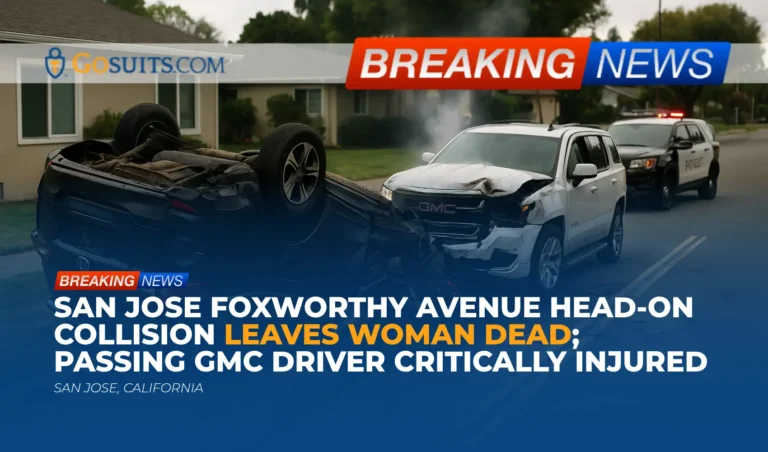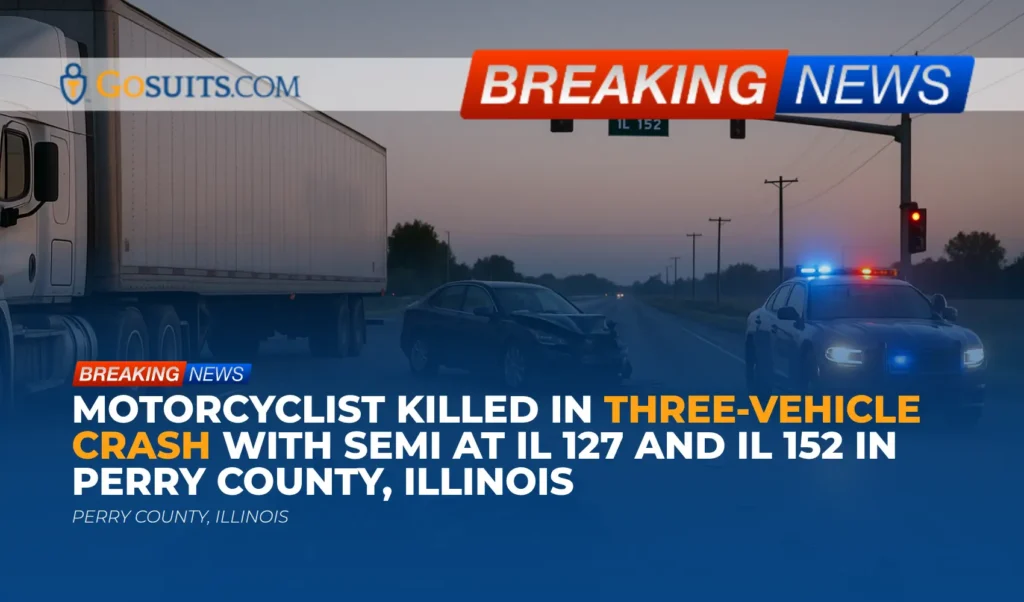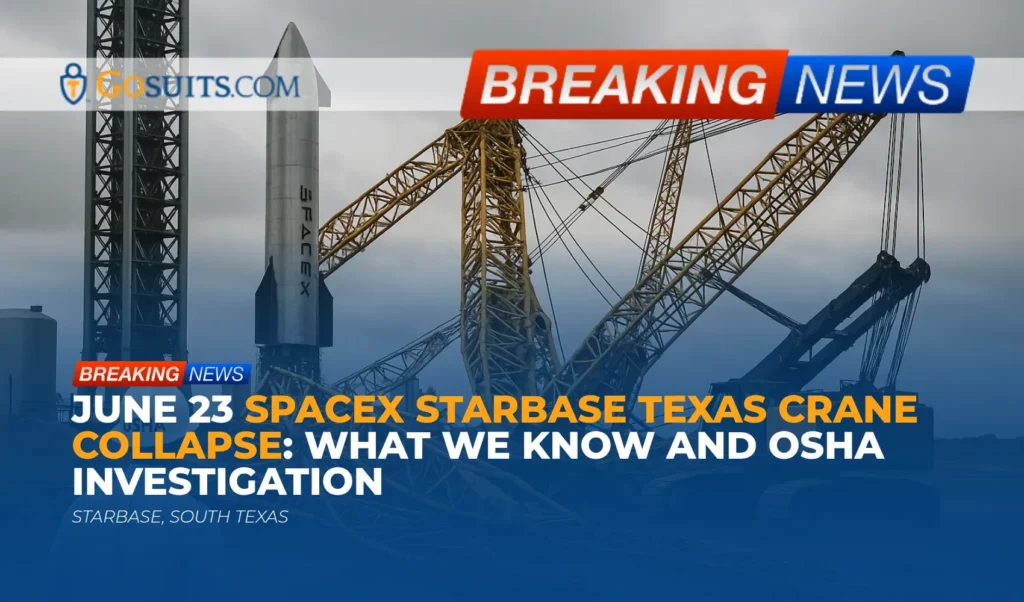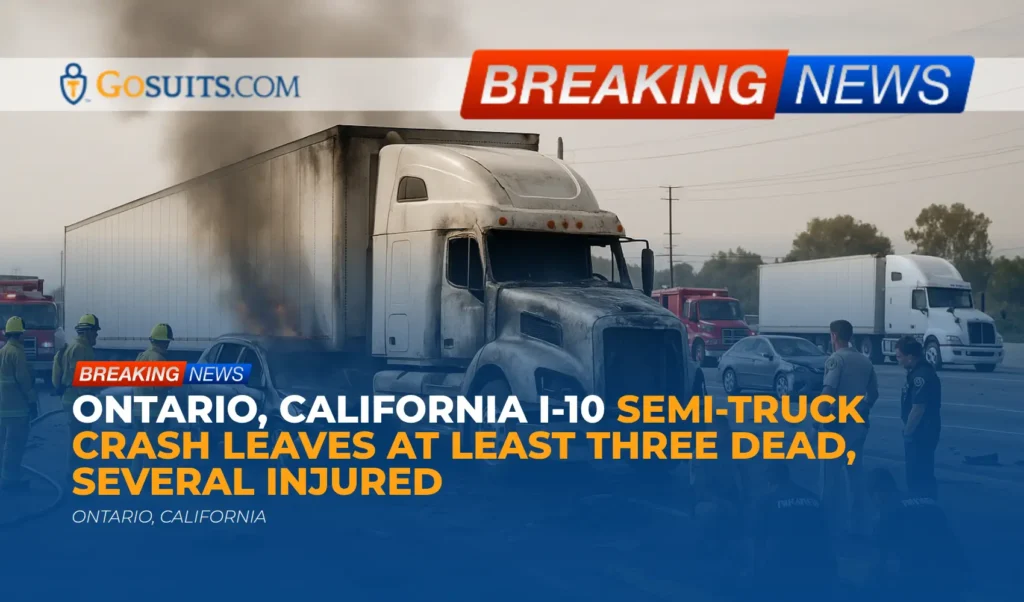- What happened on Foxworthy Avenue
- Where and when the collision occurred
- Status of the investigation and how to share information
- Why high-speed passing maneuvers are so dangerous
- California laws potentially implicated
- Evidence that can clarify fault
- What families can request: police, coroner, and records
- Insurance and claims: practical guidance
- Wrongful death claims in California: eligibility and damages
- Timelines and deadlines to know in California
- Community safety considerations for the area
- Supportive next steps after a sudden loss
- Commentary from Gosuits San Jose, California Personal Injury Attorney
- Time-sensitive action checklist
What happened on Foxworthy Avenue
According to San Jose authorities, a three-vehicle crash occurred in a residential neighborhood when the driver of a white 2018 GMC Denali traveling eastbound on Foxworthy Avenue near Jarvis Avenue attempted to pass a 2018 Subaru Forester. During the attempt, the GMC made contact with the Subaru, shifted into the oncoming lane, and struck a blue Honda CR‑V head-on. The woman driving the Honda died at the scene. The driver of the GMC was transported to a nearby hospital with life-threatening injuries, and the Subaru’s driver was not injured. Neighbors reported that the GMC appeared to be traveling at a very high speed; however, official speed determinations have not yet been released by police.
Video shared by a neighbor shows the GMC pushing the Honda down the street and a fire in the GMC’s front end after impact. The Honda came to rest overturned on a front lawn. This description is limited to information publicly described by police and witnesses; the full collision investigation will determine the sequence of events, speeds, and legal conclusions.
Where and when the collision occurred
The crash happened on Foxworthy Avenue near Jarvis Avenue in San Jose on a Saturday afternoon at approximately 2:35 p.m. Based on police statements, this was a multi-vehicle, head-on collision initiated during a passing maneuver on a neighborhood street in daylight hours.
Status of the investigation and how to share information
San Jose Police Department’s Traffic Investigations Unit is investigating. Community members who saw the events, have dashcam or doorbell footage, or can provide relevant details are generally encouraged to share information directly with investigators. In this incident, police asked anyone with information to reach out by email or telephone to the unit handling the case:
- Email: 4103@sanjoseca.gov
- Phone: 408-277-4654
Even short video clips or observations about speed, lane position, or driver behavior just before impact can be valuable. If you have footage, preserve the original file and provide a copy to investigators. Avoid altering, compressing, or editing the recording.
Why high-speed passing maneuvers are so dangerous
Head-on collisions are among the most severe roadway events because closing speeds combine. A vehicle traveling in the wrong direction or encroaching into the oncoming lane can turn a split-second misjudgment into a catastrophic impact. Federal safety research has consistently found that speed increases both the likelihood of a crash and the severity of injuries because higher speeds lengthen stopping distance and increase crash energy.
- Speed amplifies crash forces: The energy released in a crash rises rapidly with speed, increasing the risk of fatal injury. See the National Highway Traffic Safety Administration’s resources on speeding and crash outcomes at NHTSA: Speeding.
- Stopping distances grow with speed: At higher speeds, drivers need much more distance to perceive a hazard and stop. The Federal Highway Administration explains how speed affects stopping sight distance and safe passing opportunities on two-lane roads; inadequate sight distance can make passing maneuver decisions unsafe. See FHWA’s design and safety materials at FHWA: Safety.
Passing on a two-lane road requires a clear view of oncoming traffic and enough distance to complete the maneuver safely. If a driver misjudges that gap, begins a pass too close to an intersection or driveway, or strikes the vehicle being passed, the passing vehicle can be propelled into oncoming lanes.
California laws potentially implicated
While the civil and traffic law determinations in this crash remain under investigation, several California rules generally apply to passing and speed on public roads:
- Basic speed law: Drivers must not drive at a speed greater than is reasonable or prudent under the conditions, and in no event at a speed that endangers the safety of persons or property. See California Vehicle Code § 22350.
- Passing in oncoming lane only when safe and clear: Drivers overtaking on the left must pass only when the left side is clearly visible and free of oncoming traffic for a sufficient distance to permit the overtaking to be completed without interfering with the safe operation of any vehicle approaching from the opposite direction. See Vehicle Code § 21751.
- Proper overtaking and passing: A driver overtaking another must pass to the left at a safe distance and not return to the right until safely clear. See Vehicle Code § 21750.
- Lane usage and safe lane changes: Drivers must stay within a single lane and not move from the lane until they have first determined that such movement can be made with reasonable safety. See Vehicle Code § 21658.
- Center-line restrictions: If the roadway is marked with specified center lines (for example, double parallel solid lines), crossing may be prohibited except in limited circumstances. See Vehicle Code § 21460. Whether such markings were present here will be part of the scene analysis.
In civil cases, these statutes may inform determinations of negligence if a driver failed to use reasonable care and violated a safety rule, subject to the full facts and any defenses.
Evidence that can clarify fault
Civil investigations often look beyond initial reports to capture objective data, measurements, and recordings. In a high-energy collision like this, useful evidence can include:
- Event data recorders (EDRs): Many late-model vehicles store pre-crash data such as speed, throttle, braking, and seatbelt use for a brief window before impact. NHTSA provides information on EDRs and access protocols at NHTSA: Event Data Recorder. Prompt preservation is critical to avoid power loss or overwriting.
- Scene documentation: Skid or yaw marks, debris fields, final rest positions, fluid trails, and roadway markings help reconstruct speed and path of travel. Daytime lighting, sight lines, and any view obstructions near Foxworthy and Jarvis also matter.
- Vehicle inspections: Crush patterns, intrusion measurements, restraint performance, and airbag control module data can corroborate speed and impact angles.
- Witness statements and videos: Doorbell cameras, dashcams, and bystander videos can establish timing and lane positions. Originals should be preserved without edits.
- Traffic engineering context: Posted speed limits, roadway classification, center-line patterns, and any traffic calming measures can be relevant. The city’s Vision Zero and roadway safety initiatives provide context for high-injury corridors, see City of San Jose: Vision Zero.
Because the GMC reportedly made contact with the Subaru before entering the opposing lane, close analysis of that initial contact point, any steering inputs, and the relative positions of all three vehicles will be central to reconstructing the sequence.
What families can request: police, coroner, and records
In serious and fatal collisions, several official records can help families understand what happened and support any civil claims.
Police traffic collision report (TCR)
San Jose Police Department prepares a traffic collision report that includes narrative, diagram, involved parties, witness statements, and sometimes preliminary fault findings. Under California law, access to collision reports is generally limited to involved parties and their legal representatives. See Vehicle Code § 20012 on confidentiality and access by interested parties.
- How to request: SJPD typically accepts TCR requests by mail or online from involved individuals, next of kin, or authorized insurance representatives. For current instructions, consult the City of San Jose’s Police Department information pages at sanjoseca.gov or call the non-emergency number listed by SJPD to confirm the correct request path.
- What to have ready: Date and time of crash, location (Foxworthy Ave near Jarvis Ave), vehicle information, and the report number if provided by officers.
Medical Examiner–Coroner and autopsy report
In California, county coroners are charged with investigating unexpected or violent deaths, including traffic fatalities. The coroner determines cause and manner of death and may conduct an autopsy and toxicology testing under Government Code § 27491. Autopsy and toxicology results, when complete, are typically available to next of kin upon request.
- Who to contact: Santa Clara County’s Medical Examiner–Coroner handles autopsy and records in San Jose-area deaths. Families can locate current contact information by visiting Santa Clara County government websites or calling the county’s main information line to be routed to the Medical Examiner–Coroner’s Office.
- What to ask for: Autopsy report, toxicology results (if performed), and confirmation of when the records will be finalized. Processing times can vary.
- Death certificates: Certified copies are issued through the county or the California Department of Public Health. See California Department of Public Health: Vital Records for statewide guidance.

911 audio, CAD logs, and body-worn camera footage
Dispatch logs, 911 audio, and officer body-worn camera footage may exist. Access is governed by the California Public Records Act and other laws. Some materials may be restricted or available only to parties through a formal process. For general public records procedures, see the City of San Jose’s open government resources at sanjoseca.gov.
Insurance and claims: practical guidance
Families navigating insurance after a fatal crash face difficult timing and complex questions. The at‑fault driver’s liability insurance, the decedent’s own policies, and potentially other coverage can be implicated. Before speaking with any insurance adjuster about the facts of the crash, consider the following guidance:
- Consult an attorney first: It is wise to speak with a qualified personal injury attorney before giving any recorded statement or signing documents for any insurer. What someone says to an insurance company can be used against them later. Many firms offer free consultations to explain rights and options.
- Liability insurance: If another driver is found negligent, their bodily injury liability coverage is typically the primary source of compensation for wrongful death claims, subject to policy limits.
- Underinsured motorist (UIM): If the at‑fault driver’s limits are inadequate, a claim under the decedent’s own uninsured/underinsured motorist coverage may be possible, depending on the policy language.
- Medical payments coverage: Some policies include “med pay,” which can assist with certain expenses regardless of fault, subject to limits and exclusions.
- Property damage: The estate or family may address the total loss of the vehicle through property damage coverage. Preserve the vehicle until an inspection and any independent evaluation are completed.
- Statements and authorizations: Avoid broad medical authorizations or detailed recorded statements before consulting counsel; provide only what is necessary to open a claim.
If initial facts suggest the GMC’s passing maneuver and lane encroachment preceded the head-on impact, liability analysis will focus on whether the driver violated one or more safety duties under the vehicle code and general negligence principles. However, insurers may dispute fault allocation or raise comparative negligence theories. Preserving objective evidence can shorten disputes and promote a fair resolution.
Wrongful death claims in California: eligibility and damages
California’s wrongful death law allows certain family members to bring a civil claim when a death is caused by another’s negligence or wrongful act. Eligibility and recoverable damages are defined by statute and case law.
- Who may bring a claim: The decedent’s surviving spouse or domestic partner, children, and sometimes other heirs or financially dependent individuals may have standing to sue under Code of Civil Procedure § 377.60.
- What damages may be recoverable: Economic losses such as financial support the decedent would have contributed, loss of gifts or benefits, funeral and burial expenses, and the reasonable value of household services. Non-economic damages for the survivors’ loss of the decedent’s love, companionship, comfort, care, assistance, protection, affection, society, and moral support are also recognized under California law. See California civil jury instructions published by the Judicial Council at courts.ca.gov.
- Survival claims: Separately, the decedent’s estate may bring a “survival” claim for certain damages the decedent could have recovered had they lived, pursuant to CCP § 377.30 and CCP § 377.34, subject to statutory limits and any applicable amendments in force at the time of filing.
Each case is fact-specific, and the interplay of wrongful death and survival causes of action should be evaluated with counsel based on the evidence and family circumstances.
Timelines and deadlines to know in California
Civil claims are governed by statutes of limitation. Missing a deadline can bar recovery regardless of the merits. While specific timelines can vary depending on parties and facts, the following general guidance applies:
- General wrongful death statute of limitations: Two years from the date of death in most negligence cases, under CCP § 335.1.
- Claims against public entities: If a city, county, or other public entity may be implicated (for example, in limited roadway design or maintenance allegations), a government claim usually must be filed within six months under the Government Claims Act before any lawsuit. See Government Code § 810 et seq..
Because deadlines can be complex when multiple defendants or insurance coverages are involved, timely legal guidance is important. Families often begin by preserving evidence immediately and gathering essential records while the civil timeline is assessed.
Community safety considerations for the area
Residents described Foxworthy Avenue as a location where crashes have occurred before. Neighborhood streets that experience higher speeds or aggressive passing are particularly vulnerable to severe outcomes. Vision Zero programs, which San Jose participates in, focus on eliminating traffic deaths and serious injuries through engineering, education, and enforcement. See the city’s safety program resources at San Jose Vision Zero.
Common measures in residential corridors include speed management, better sight lines near driveways and intersections, center-line treatments, and targeted enforcement. Community members can report concerns and collaborate with city transportation staff to evaluate feasible safety enhancements.
Supportive next steps after a sudden loss
When a family loses a loved one to a sudden crash, the practical steps can feel overwhelming. These actions may help create clarity while honoring grief and privacy:
- Designate a family point of contact: Choose one person to interface with police, the coroner, and insurers. This can reduce repeated conversations during a difficult time.
- Preserve evidence: Save any photos, videos, or communications related to the crash. Ask neighbors if they captured doorbell or camera footage and request they preserve originals. Provide copies to investigators.
- Request key records: Initiate requests for the police traffic collision report, autopsy and toxicology (if applicable), and certified death certificates.
- Hold off on detailed insurance statements: Before speaking with an adjuster about fault or signing authorizations, consult with a seasoned attorney for guidance. Statements can be used later by insurers during fault and damages evaluations.
- Track expenses and impacts: Keep a simple file of funeral and burial costs, counseling or support services, and any financial impacts to dependents. Documentation supports claims evaluation and can prevent later scrambling.
- Consider grief and support resources: Many county and nonprofit programs offer bereavement support to families affected by sudden loss. Asking a care provider or local hospital for referrals can be an easy starting point.
Commentary from Gosuits San Jose, California Personal Injury Attorney
Our hearts are with the family and neighbors grieving after this devastating head-on crash. This summary is offered for educational purposes and general information. The details ultimately established by investigators will guide any civil accountability.
Based on the publicly described sequence, a passing maneuver that led to contact with another vehicle and encroachment into the oncoming lane created an extremely high-risk scenario. California’s safety rules require drivers to pass only when the oncoming lane is clearly open and to drive at a speed that is reasonable and prudent for the conditions. When those duties are breached, even for moments, the consequences can be irreversible. The presence of daytime traffic, driveways, and neighborhood activity compounds the danger of any aggressive pass.
In our experience, insurance carriers and corporate defendants often move quickly to shape the narrative. Adjusters may request recorded statements or broad authorizations and may minimize severe losses by focusing narrowly on policy limits or disputing fault. Families facing shock and grief do not always realize that early statements can be quoted later, that evidence can disappear if not preserved, or that multiple insurance coverages could apply. A calm, informed strategy—grounded in the available evidence—can help balance those dynamics.
An early, no-cost consultation with a skilled personal injury attorney can clarify options, protect against common insurance pitfalls, and prioritize the preservation of critical evidence such as vehicle data recorders, scene measurements, and videos. It is also a chance to understand timelines under California law, including the two-year period that generally applies to wrongful death claims and the shorter deadlines that can apply if a public entity might be involved in any limited roadway issues.
Time-sensitive action checklist
The following steps explain what should be done promptly in the wake of a fatal roadway incident, why timing matters, and how these actions can protect legal rights and clarity:
- Preserve digital evidence now
- Ask nearby residents and businesses to save doorbell and security video for the date and time of the crash. Many systems overwrite within days.
- Save text messages, photos, and any social media posts that reference the incident.
- Secure the vehicles for inspection
- Request that all involved vehicles be preserved without alteration until independent inspection and downloading of any event data recorders can occur. Tow yards often begin disposal processes quickly.
- Request official records early
- Initiate a request for the San Jose Police traffic collision report as soon as it becomes available, referencing the date, time, and location.
- Contact the county Medical Examiner–Coroner to ask about autopsy and toxicology timelines and how to request copies when complete.
- Order certified death certificates through the county or the California Department of Public Health at cdph.ca.gov.
- Speak with an attorney before calling insurers
- Obtain a free consultation with a qualified attorney prior to providing any recorded statements to insurance companies. Anything said to an insurer can be used later to dispute fault or damages.
- Discuss all potentially applicable coverages, including liability, uninsured/underinsured motorist, and medical payments.
- Protect timelines
- Note the general two-year wrongful death statute under CCP § 335.1 and the six-month government claim requirement if a public entity could be implicated. Early legal review can preserve all options.
- Coordinate a single information channel
- Designate one family representative to communicate with police, the coroner, and any insurers to minimize conflicting statements and reduce stress.
- Document impacts thoughtfully
- Keep receipts for funeral and memorial expenses and note household contributions previously provided by the decedent. Such records assist in the fair evaluation of losses recognized by California law.

Helpful official contacts
- San Jose Police Department Traffic Investigations Unit: 4103@sanjoseca.gov; 408-277-4654
- City of San Jose information and services: sanjoseca.gov
- California Department of Public Health – Vital Records: cdph.ca.gov
Key sources and references
- NHTSA: Speeding
- NHTSA: Event Data Recorders
- FHWA: Highway Safety
- California Vehicle Code § 22350
- Vehicle Code § 21751
- Vehicle Code § 21750
- Vehicle Code § 21658
- Vehicle Code § 21460
- Vehicle Code § 20012
- Government Code § 27491
- Code of Civil Procedure § 377.60
- Code of Civil Procedure § 377.30
- Code of Civil Procedure § 377.34
- Code of Civil Procedure § 335.1
- City of San Jose: Vision Zero






